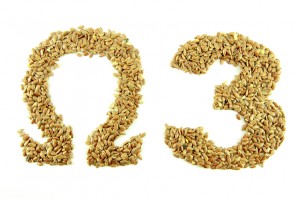 By Jennifer Broder RD LD/N CISSN CSSD and Anastasia Kyriakopoulos.
By Jennifer Broder RD LD/N CISSN CSSD and Anastasia Kyriakopoulos.
Omega 3 fats have been getting much attention over the years for the lengthy list of proven and theorized benefits. Most attention is derived from the benefit and protective effects of cardiovascular, cognitive function, and ocular health (1) (2). In athletic performance, it has been recently shown to decrease muscle fatigue and soreness (3) (4). There is another possible role of omega 3 fatty acids that has been on the minds of National Football League: The possible use of Omega 3 Fatty acids in concussion management and rehabilitation protocol.
Concussion management has also evolved rapidly over the past 10 years primarily based in the neuroscience research. Researchers are noting a significant correlation between Omega 3’s DHA and the treatment for TBI (traumatic brain injury) and concussions. Docosahexaenoic acid (DHA) makes up 97% of the human brains fatty acid content (5). In fact the brain will hang on to its DHA while other organs are depleted possibly as a survival mechanism. This is worth noting as we explore the theories proposed for EPA and DHA’s role in treatment of traumatic brain injuries, hence concussions.
We know there are a cascade of events that take place upon impact and continuing afterwards. If not dealt with, reported or even recognized (very common as one does not always lose consciousness with a concussion) this can compromise the brains integrity greatly. In an event of a concussion axonal injury can occur. The axons in the brain provide a bridge for signals to be received from cell to cell. When injured a cascade of events such as increase in free radicals, damage to cell membranes and synapses, increased levels of glutamate and intracellular calcium occurs leading to further degradation of the brains function. DHA is the precursor to Neuroprotectin D1 (NPD1) which maintains homeostasis and suppresses oxidative stress after injury (5). It is theorized that DHA can play a role in stopping or reducing this cascade of events by decreasing axonal injury, acting as an antioxidant and aiding in cell energy and repair. In fact, NPD1 may aid in altering gene expression from pro-inflammatory to anti-inflammatory. One may then consider the nutritional epigenetic impact that daily EPA DHA consumption and supplementation can have on gene expression therefore promoting an anti inflammatory protective response following a concussion or TBI.
One important study done on 40 adult male rats who received 30 days of supplementation of DHA in the form of algae immediately post brain injury had a significant reduction in axonal injury (5). Another study done with the same injury model with fish oil rich in both EPA and DHA revealed a similar outcome as there was also a reduction in the number of injured axons (5). Lastly, a study was done to test the effects of DHA supplementation prior to injury. The rats were supplemented with DHA 30 days prior to injury, resulting in higher levels of DHA in the brain as well as a reduction in axonal injury (5). We can also conclude from the cardiovascular, cognitive, and ocular health research that there is a great likely hood of EPA & DHA supplementation can promotes an anti inflammatory effect, optimize antioxidant activity and aid in cell homeostasis(6)(7). This then may be the nutritional tool that can be applied in concussion management.
So the question is why are we not enforcing every contact sport to have EPA DHA supplements and consume vast quantities of fish on the sidelines with their Gatorade? Well, the research is promising but there are still more questions and concrete guidelines to be established. We know EPA and DHA play these roles in treatment and prevention in concussions and TBI but the exact mechanisms, genetic differences, and individual threshold of injury are still not completely understood. Furthermore, there is still no consensus on the optimal dosages and even food intake recommendation across the health and supplement industry.
So, we as healthcare practitioners are faced with the question. Food or Supplementation to achieve possible prevention or treatment of concussions and TBI? Hmmmmm…..what to do? Our thoughts are food AND supplementation for prevention and treatment. “The FDA has ruled that intakes of up to 3 g/d of marine omega-3 fatty acids are GRAS (Generally Recognized As Safe) for inclusion in the diet” (10). Increasing consumption of healthy fatty fishes should be our recommendations at least 3-4x week. Realistically, most people do not consume these sources on a daily basis; supplementation of EPA and DHA daily can be our patient’s back up plan. We do believe consistency of supplementation is key to reaching adequate levels of EPA and DHA in the body while consuming foods rich in Omega 3 fatty acids.
For supplementation practices, one must consider the type of fish oil, the molecular form, and the manufacturing practices and standards to provide athletes safe, effective, and quality products. We have found in practice that Omega 3 supplements are best in concentrated dosages for increased compliance, the triglyceride (TG) form is far superior to the synthetic ethyl ester (EE) form because of the increased absorption and assimilation, and lastly all companies are not alike and thorough research of companies testing and protocols should be evaluated closely.
For optimal food recommendations, always remember Essential Fatty acids are “Yes!” essential because we humans have the inability to synthesize them in the body. Therefore; we must obtain them in our diet from animal and plant species that can synthesize such fats (8). It is important to note the plant sources rich in ALA are only at a ~15% conversion rate to the much needed family of eicosanoids; EPA & DHA which are the anti-inflammatory, anti-thrombotic, anti-arrhythmic, and vasodilators(8)(9).
The current ratio of the typical Western diet is 20:1 containing more of the Omega 6s that are pro-inflammatory and less of the beneficial omega 3 fatty acids of EPA and DHA(8). The healthy ratio of EPA and DHA recommended by the Institute of Medicine is 7:1 (8). To optimize our American diets we must increase food rich in omega 3 fatty acids and off set this poor ratio. Fatty fish like wild caught salmon, herring, and sardines are excellent source of omega 3 fatty acids. Below are some of the richer sources of EPA and DHA (9). Note the quantity needed to reach therapeutic dosages by food alone.
|
Fish |
Grams of EPA and DHA per 3oz serving edible portion |
Amount Required in Ounces to Provide ~1 gram of EPA/DHA per day |
| Catfish, wild | 0.2 g | 15 oz |
| Cod, Atlantic | 0.24 g | 12.5 oz |
| Tuna, light in water | 0.26 g | 12 oz |
| Flounder/Sole | 0.42g | 7oz |
| Tuna, white in water | 0.73 g | 4 oz |
| Mackerel | 0.34-1.57 g | 2-8.5 oz |
| Salmon, Atlantic, wild | 0.9-1.56 g | 2-3.5 oz |
| Sardines | 0.98-1.70 g | 2-3 oz |
| Herring, Pacific | 1.81 g | 1.5 oz |
|
Omega 3 Fatty Acids Supplementation |
EPA and DHA per capsule or Liquid dosage |
Amount Needed in Capsules or in Ounces to Provide ~3 gram of EPA/DHA per day |
| Nordic Naturals- ProOmega D Xtra | 3g per 1 tsp | 1 tsp |
| Original Nutritionals –Functional O3 | 1.375g per 1 tsp | 3 tsp |
| Nordic Naturals- Ultimate Omega | 0.60 per soft gel capsule | 5 capsules |
| Orthomolecular-OrthoMega | 0.72g per soft gel capsule | 5 capsules |
TAKE HOME MESSAGE
Therapeutic Amounts in the ranges of 2000mg and above daily are possibly beneficial for prevention to off set the ratio of Omega 6:3 in our “SAD” American diet and to possibly treat our sports and recreation related concussions in our children and adults. The research so far has shown us the possibility that one day Omega 3 fatty Acids; specifically EPA & DHA could be incorporated into concussion protocol. We do believe that the consistent consumption of these ESSENTIAL Omega 3 Fatty Acids throughout the lifecycle could be the most important in the possible prevention and management of concussions & TBI. More studies are needed to unfold the true potential of these crucial fatty acids and appropriate individual dosages. We definitely suggest athletes to consume more omega 3 rich foods BUT optimal dosing via supplementation is needed to meet the therapeutic demands of prevention and treatment. In conclusion, the maintenance of a balanced diet rich in Omega 3s and/or supplementation is ESSENTIAL for OPTIMAL HEALTH and WELLNESS!
ABOUT THE AUTHORS
Jennifer Broder RD LD/N CISSN CSSD is the Medical Nutrition Director of www.themedicalnutritioncenter.com . The Medical Nutrition Center is the 1st science based functional nutrition practice focused on health & lifestyle changes to prevent, treat, or reduce your health risks for a lifetime. Jennifer has been well known as www.askthenutritionist.com for the past 16+ years. She specializes in evidenced-based research and promotion of nutritional science focused on disease prevention and management, eating disorders, bariatric surgery, weight management, wellness, & sports nutrition.
Anastasia Kyriakopoulos is a University of Florida graduate with a Bachelor’s degree in Food Science and Human Nutrition. She is currently completing her Dietetic Internship Program through Sodexo at The Medical Nutrition Center in Tampa, FL. Her areas of interest are weight management and sports nutrition.
References- Wu A, Ying Z, Gomez-Pinilla F., “Docosahexanoic Acid Dietary Supplementation Enhances the Effects of Exercise on Synaptic Plasticity and Congnition.” Neuroscience 2008; 155(3):751-9.
- Chytrova G, Ying Z, Gomez-Pinilla F., “Exercise Contributes to the Effects of DHA Dietary Supplementation by Acting on Membrane-Related Synaptic Systems.” Brain Research 2009.
- Jouris K, McDaniel J, Weiss E., “The Effect of Omega-3 Fatty Acid Supplementation on the Inflammatory Response to Eccentric Strength Exercise.” Journal of Sports Science and Medicine. 2011; 10: 432-438.
- SpectraCell Laboratories “Nutritional Considerations of Sports Medicine”. 2011. www.spectracell.com
- Bailes J, Mills J., “Docosahexanoic Acid Reduces Traumatic Axonal Injury in a Rodent Head Injury Model.” Journal of Nuerotrauma. 2010; 27:1617-1626.
- Guilliams T., “The Use of Fish Oil Supplements in Clinical Practice: A Review”. Journal of the American Nutraceutical Association. 2005; 8(1).
- Gomez-Pinilla F, Ying Z., “Differential Effects of Exercise and Dietary Docosahexaenoic Acid on Molecular Systems Associated with Control of Allostasis in the Hypothalamus and Hippocampus.” Neuroscience 2010; 168(1): 130-7.
- Antonio J, Kalman D, Stout J, Greenwood M, Willoughby D, Haff G., Essentials of Sports Nutrition and Supplements. 2008;268-270.
- Kris-Etherton P, William H, Appel L., “Fish Consumption, Fish Oil, Omega-3 Fatty Acids, and Cardiovascular Disease.” Journal of The American Heart Association. 2002; 106:2747-2757.
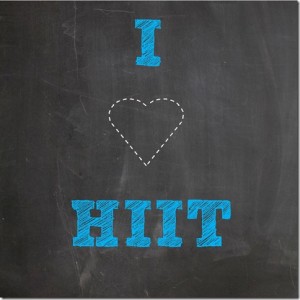

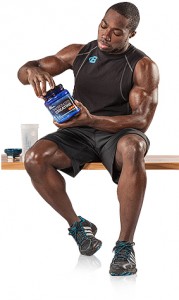
 mankind. For a copy of the report, go to
mankind. For a copy of the report, go to  mean aspirin works (for treating headaches)? Or not? Scientific conclusions are based on the PREPONDERANCE of the evidence. And it is clear that the preponderance of the evidence points to a robust ergogenic response from creatine supplementation. Sure, it doesn’t work for everyone. But then again what does? For a scientific summary of creatine, please read the ISSN’s Position paper on creatine.[
mean aspirin works (for treating headaches)? Or not? Scientific conclusions are based on the PREPONDERANCE of the evidence. And it is clear that the preponderance of the evidence points to a robust ergogenic response from creatine supplementation. Sure, it doesn’t work for everyone. But then again what does? For a scientific summary of creatine, please read the ISSN’s Position paper on creatine.[ h.
h.  Sports Medicine, “Recent reports now suggest that creatine may enhance performance in hot and/or humid conditions by maintaining haematocrit, aiding thermoregulation and reducing exercising heart rate and sweat rate. Creatine may also positively influence plasma volume during the onset of dehydration. Considering these new published findings, little evidence exists that creatine supplementation in the heat presents additional risk, and this should be taken into consideration as position statements and other related documents are published.”[
Sports Medicine, “Recent reports now suggest that creatine may enhance performance in hot and/or humid conditions by maintaining haematocrit, aiding thermoregulation and reducing exercising heart rate and sweat rate. Creatine may also positively influence plasma volume during the onset of dehydration. Considering these new published findings, little evidence exists that creatine supplementation in the heat presents additional risk, and this should be taken into consideration as position statements and other related documents are published.”[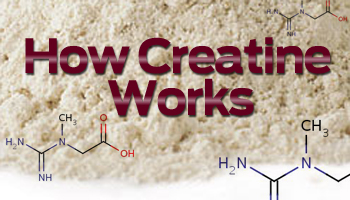


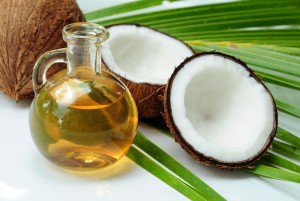
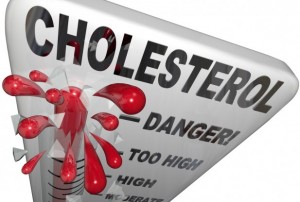






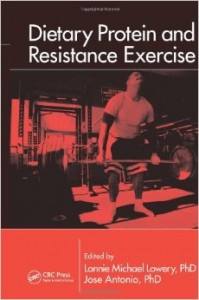
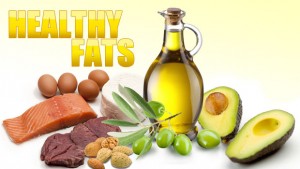
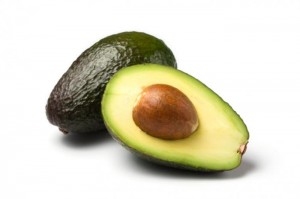
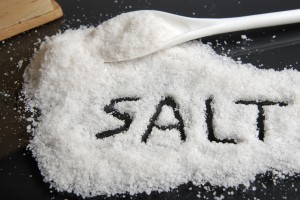

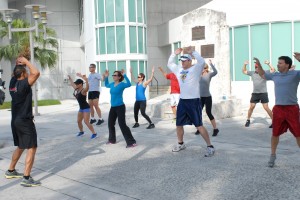
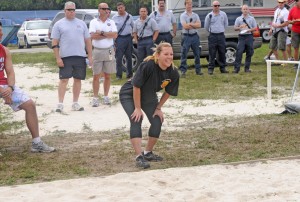


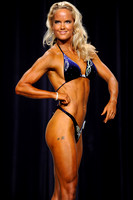
 I’d say increase protein intake while decreasing intake of processed carbohydrates (cereal, breads, baked goods, wheat products, etc). The food journals I review from clients consistently show very low protein intake, and very high intake of the processed carbohydrates mentioned. Not surprisingly, he clients recording this type of intake are, initially, over-fat, out of energy, with less than stellar blood work. This strategy works well for several reasons: 1. increasing protein intake helps create a more efficient metabolism (via the higher thermic effect of protein), in addition to building a stronger immune system. 2. Blood sugar levels are controlled far better when processed carbohydrates are reduced, and controlled blood sugar levels allow your body to begin the fat-loss process.
I’d say increase protein intake while decreasing intake of processed carbohydrates (cereal, breads, baked goods, wheat products, etc). The food journals I review from clients consistently show very low protein intake, and very high intake of the processed carbohydrates mentioned. Not surprisingly, he clients recording this type of intake are, initially, over-fat, out of energy, with less than stellar blood work. This strategy works well for several reasons: 1. increasing protein intake helps create a more efficient metabolism (via the higher thermic effect of protein), in addition to building a stronger immune system. 2. Blood sugar levels are controlled far better when processed carbohydrates are reduced, and controlled blood sugar levels allow your body to begin the fat-loss process.
